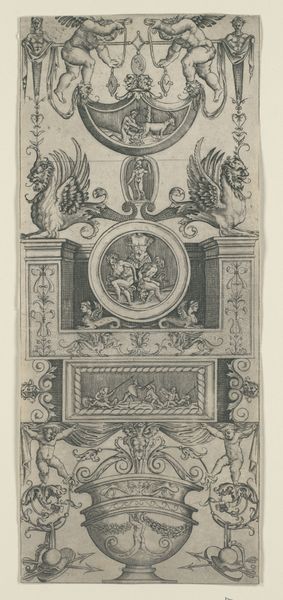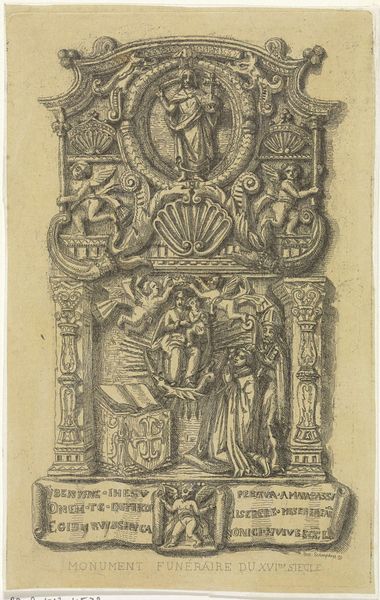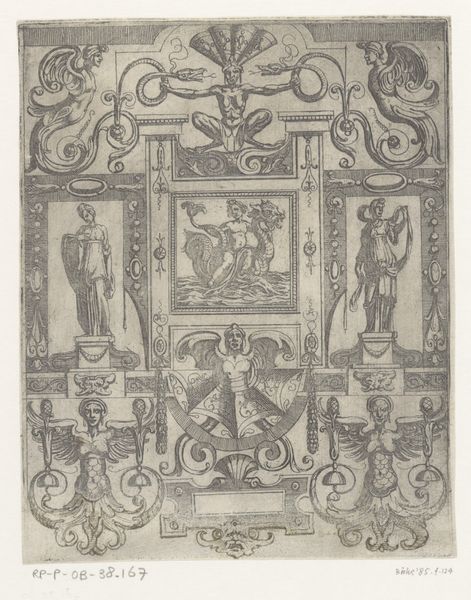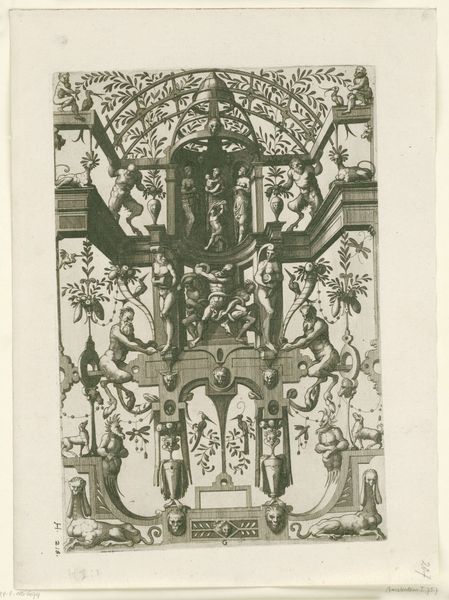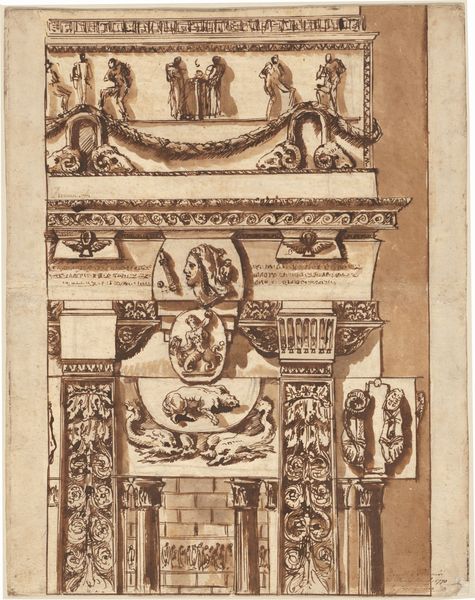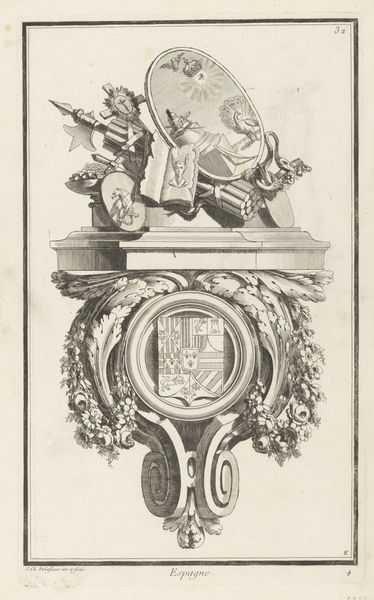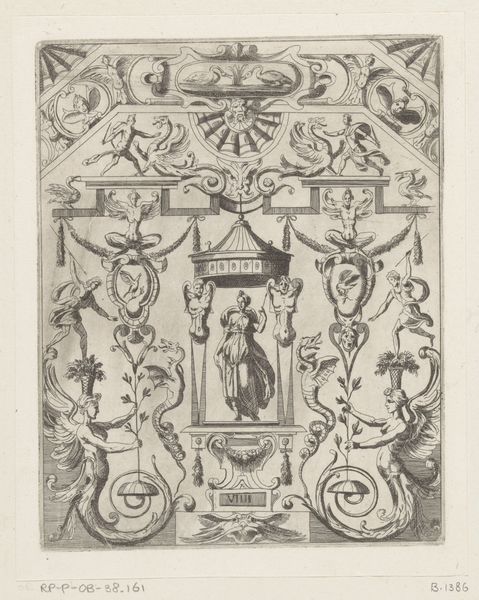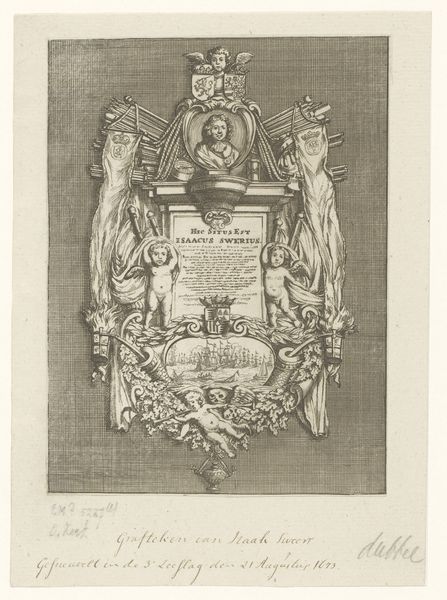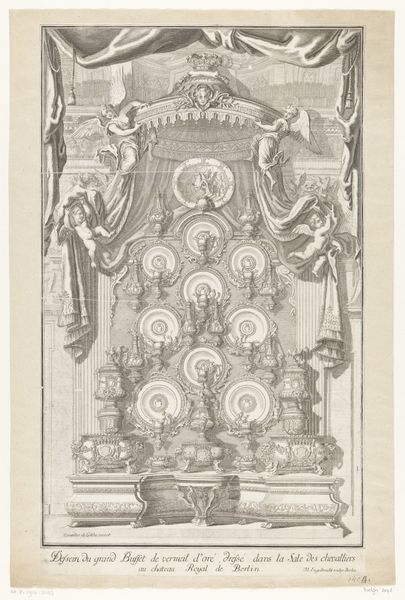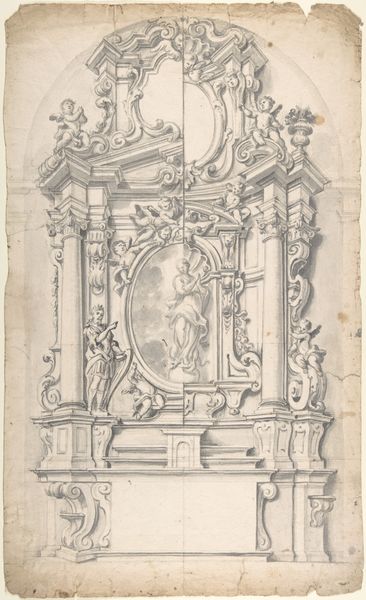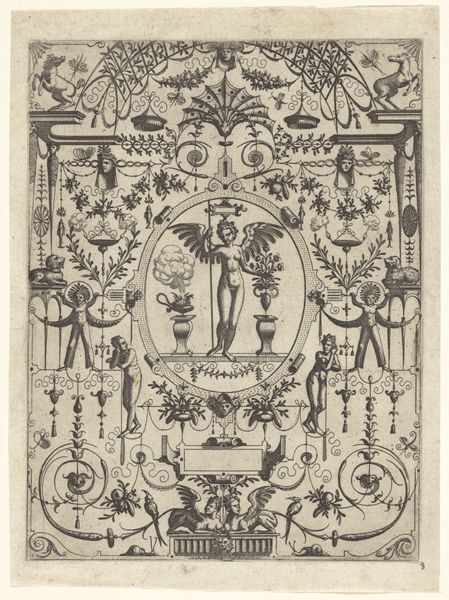
print, paper, engraving
#
portrait
#
pencil drawn
#
baroque
# print
#
woodcut effect
#
figuration
#
paper
#
line
#
history-painting
#
academic-art
#
engraving
Dimensions: height 353 mm, width 230 mm
Copyright: Rijks Museum: Open Domain
Editor: This print, "Portret van Benedictus XIII" made in 1728 by Johann Andreas Pfeffel, it's incredibly detailed with lots of inscriptions and a central oval vignette featuring Benedictus at his writing desk. What strikes me most is how it blends the portrait genre with symbolic imagery. How do you read this piece, especially considering its historical context? Curator: It's fascinating, isn't it? The Baroque era saw a real explosion in using imagery to convey power and status, and prints like this one played a vital role. What’s key here is that it's not just a portrait of Benedictus XIII, it’s a construction of his image intended for public consumption. Consider the setting: the books, the act of writing. What do these signify to you? Editor: I suppose they emphasize his intellect and scholarly pursuits, legitimizing his authority through knowledge. It's like saying his power comes from a place of learned wisdom. Curator: Exactly. And note the architectural framework laden with inscriptions and medallions. These prints were often commissioned by institutions or individuals wanting to broadcast a specific message. Do you think it matters who might have originally owned or displayed this print? Editor: Definitely. It could reveal which circles were aligned with Benedictus XIII's papacy. The image clearly functions as propaganda, solidifying his power within religious and political networks. Thinking about it as propaganda makes me question who this portrait was intended for and if the artist held a bias in their depiction of the Pope. Curator: Precisely. And that skepticism is key. By considering the socio-political forces at play, we move beyond simply admiring the artistry and begin to understand the image as a deliberate act of communication embedded in a complex web of power. Editor: This print does so much more than illustrate a pope! Understanding it within the context of 18th-century social structures is super interesting. Curator: Absolutely. These images were vital in shaping public opinion and consolidating power. The politics of imagery! A lesson we are still learning today!
Comments
No comments
Be the first to comment and join the conversation on the ultimate creative platform.

